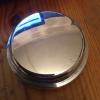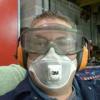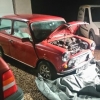The op's question was "what is the maximum safe revs" he also made the statement "he'll not be thrashed" which I would guess the OP was referring to the engine not the engine builder lol....
Of course if the engine is red lined 24x7 it won't last too long, but then no engine will, however if you build in reliability for it to rev higher then it will last longer if then driven to the 90% (which is where most car manufacturers base their warranty claims)
If you remove the issues, ie fatigue by polishing, steel shot blasting etc the parts that will fail such as conrods then you will increase reliability, we all know that if the engine sits in the garage never driven it will last for years, so as in all Engineering there is a compromise, that compromise is durability/time.
In this case I would say the OP wants an engine that he can rev the socks off from time to time, whilst also being able to drive it in town or in a traffic jam without any issues.
In my opinion a 266 or a 276 or similar would give the OP what they want, the polished conrods and tuftrided crank would help it to stay together, duplex timing helps the ignition and cam timing to stay "in tune" for longer and a half decent head, the head would give the most benefits for power output as most 998 heads are pretty poor at flowing, coupled with 1.3:1 rockers and if money can be stretched an ECU in place of the dizzy would increase the output,
But a few other things to factor in, 1) you will need a rolling road calibration to get the most out of all aspects, ie power, reliability etc. 2) don't forget insurance costs 3) Suspension and brakes to cope with the increase in power.
Also to note, light weight components can add reliability, ie a lighter flywheel hanging on the crank tail will reduce the wear on the crank bearings and reduce the fatigue on the crank itself, but like all things Engineering it is a compromise if you take it too far then expect things to fall apart at speed as they will.
Also whilst a lightweight flywheel will rev up quicker, (this is self diminishing as you go up through the gears) it has a down side, that if your gearing is high and / or your torque is low then on a long up hill road you may find that at speed you start to slow down, lose momentum due to the mass of the flywheel not being able to store enough kinetic energy.
You can up the torque or increase the mass of the flywheel or live with it, on a typical 1380 turbo on a higher FDR there isn't a flywheel that is light enough that you need to worry, sure you can always find a steep enough hill, as your 998 is the opposite end of the power spectrum I would advise only going to a super light flywheel assembly if you are not bothered by hills.
and intend to do a couple of reversible modifications, such as a Stage one kit, and possibly a camshaft, this got me wondering, what kind of RPM will a A-Series internals take? If I were to stick a camshaft and maybe double valve springs in it, what would be a safe maximum RPM?



















